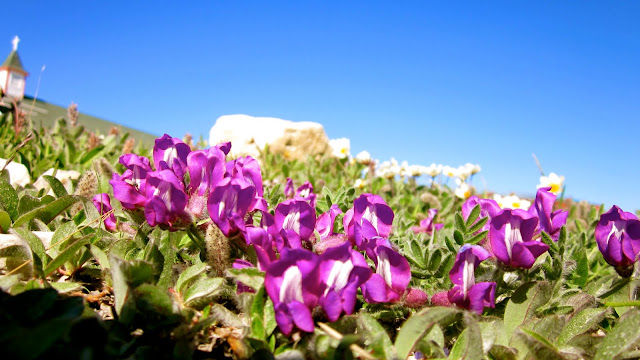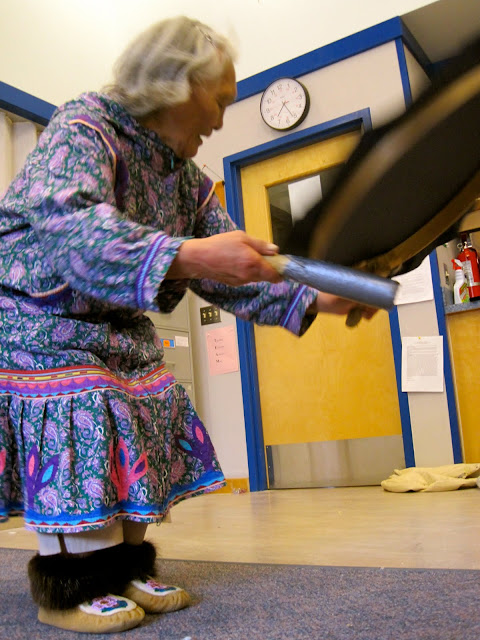I’m sitting on First Air flight #0952, Yellowknife to Edmonton. I’ve been away from home for seven, going on eight weeks now. There are tears in my eyes, weight in my chest, and fond memories dancing through my mind. The whole Arctic tour is playing through my head, bits and pieces flashing in front of my mind’s eye. I can see my campers in Pang who taught me “Innuk baseball” (a game with the same basic concept as baseball but altered rules to make it way more fun e.g. no three strike policy and you throw the ball at runners to get them out – kids, funny). I can see my girls in Cambridge Bay on the last day of camp not wanting to leave, hanging around until the last second offering to help clean the camp space so they can linger even just a little longer. Rankin is fresh in my memory, and I’m so grateful to the bravest kids in world who got up in front of all of the parents and community contacts attending our open house and sang and danced and performed beautiful throat singing, arms locked, eyes fixed, giggles always popping out after three or four rounds. The phrases “Ever!”, “Expert”, and “Not even” are engrained in my vocabulary and I can’t help saying them out loud – they just want to jump off my tongue in response to anything I’m asked.
 |
| Looking down at the land just outside Iqaluit |
 |
| Iqaluit |
These last six weeks spent touring Nunavut were so magical. Every community has a different feel, while maintaining their common air of reserved welcome and shy pride in their wildly different landscapes and shared culture. I’ve hung out in sharp mountains, dry tundra, and grey maritime environments. Temperatures have ranged from six to twenty degrees. I went four weeks without seeing the sun set once. I’ve eaten more country food (muktuk, caribou meat, caribou stomach, seal fat, seal meat, muskrat, muskox, char, trout…) in the last month and a half than ever before in my life. This place is otherworldly in the best possible way. There are no trees in sight, but I only really noticed this after a weekend in Yellowknife opened my eyes to how many trees are in other areas of the north that lie below the permafrost line. What the land lacks in trees it makes up for in strides with variation of the landscape’s hues. A flat tundra, appearing to go on forever and a day, has about a trillion shades of brown and green and grey in it; purple, pink, and yellow flowers litter the mossy earth, giving the eyes a treat (and the taste buds come berry season). The sky too: blues, oranges, pinks, purples, greens all blend together in waves above you, and I swear the sky actually looks round up here – nothing blocks the view of the true shape of the top of the world.
 |
| Mmmm muktuk and caribou stomach |
 |
| Flowers in Cambridge Bay |
 |
| Cambridge Bay |
 |
| Cambridge Bay |
 |
| Colourful skies over Cambridge Bay |
 |
| Blue, purple, orange, yellow, pink: Cambridge Bay |
 |
| Looking out into the Northwest Passage |
 |
| Lit up land in Cambridge Bay |
Overall, people here live closer to the land than anyone I know down south; the weekends at the cabin, spent hunting and visiting, are the main event. People go fishing on their lunch break (which, no matter where I went in the entire territory began promptly at noon, town-wide, and ended whenever everyone wandered back from their mid-day meal and visits). Not much is open and functioning during the lunch hour – don’t try to squeeze in your errands, just chill out and have a meal with your family or friends at home, that’s what lunch time is about. The kids here are really free. They can always (read: at all hours of the day and night) be found at the park, riding around town on their bikes, running in and out of the general stores [insert sugar filled treat] in hand, boldly gravitating toward foreigners and blurting out, “What’s your name? Where you from?” and then, looking you over once more with a cautionary up-down, accepting your answers, and wandering off again to meet up with friends. The kids I’ve met are both eager students and wise teachers; they love to discover and are more than willing to fill you in on the Inuktitut or Inuinnaqtun translation of anything and the local customs and routines – they know so much and seem older in knowledge and survival strategies than they could possibly be in years. Every kid knows how to shoot a gun, how to bait a hook, which river to fish in, and what a caribou heart tastes like (I’m sure delicious since my refusal to let the kids eat our specimen during the tuktu dissection that I led one week was met with more than a hint of disappointment and shock). Their freedom is refreshing, coming from a city where liability and cautionary preventative rules are both necessary and over emphasized, it’s nice to see kids ruling their own domain and taking ownership over their daily routines: when they want to learn and participate they are at the camp door waiting for us in the morning and when they want to be on the land, they take the day off. They often have an awareness of their mental and spiritual needs that most adults should take notes on.
There are the obvious lifestyle shortcomings in the north: a vegetarian diet is impossible to keep up, but luckily eating local, free-range, organic meat is more possible here than in any major city centre I’ve visited. The words take on an entirely new meaning when you’re eating caribou shot earlier that afternoon, across the river, by a local man who slung it on the back of his ATV to bring it home to butcher. There is however a lack of fresh produce and the prices of what is available are sky-high. Getting between communities is expensive and requires expert cross-land navigation skills fed by years of traditional knowledge, or a salary that can afford airfare. While the midnight sun, bright as ever, is totally badass, it does make it impossible to sleep without lining your windows with tinfoil; and I can’t imagine the long dark days of winter. But none of this really seems to matter when you can hop on your Honda and be in absolute wilderness, not a soul around, in about 40 minutes; or track down an elder in town who can teach you how to sew, from caribou hide or seal skin, your very own mittens, coat, or boots – the traditional way that it has been done for thousands of years. There are lingering social issues that arise in many Aboriginal communities, but there are a lot of locals who are working hard to raise awareness and set up social programs to alleviate the symptoms of past wrongdoings and current rapid cultural change. These are a people who have gone from, as one woman put it, “igloos to iPods in the last fifty years”. The elders in town grew up
on the land; while the kids are singing Justin Bieber lyrics and imitating hip hop moves from music videos. This is an ever-changing culture that is wildly resilient – strong yet flexible, because that’s how you’ve got to be in the north: adapt or perish.
 |
| Peter cutting up a local, organic, free range seal for the Nunavut Day Feast: Pangnirtung |
 |
Lauren and Mike checking out the good leftovers post caribou hunt in Rankin:
stomach (full of nutrients and greens), intestines, and antlers |
 |
| 1:00am in Cambridge Bay |
 |
| 11:00pm in Cambridge Bay |
 |
| The first real sunset I saw in six weeks: Rankin Inlet |
 |
| The stragglers from the great caribou migration just north of Rankin Inlet |
 |
| Mary, a local elder drumming and singing in Cambridge Bay |
I feel that I’m leaving a piece of myself in Nunavut, especially with the kids I’ve been working with. Hopefully they learned as much from me as I did from them. My eyes have been ever so opened to a part of Canada that so few who proudly sing “the true north strong and free” will ever experience. This is the true north and it is both proud and free beyond anyone’s wildest imagination, and even though it keeps a part of my spirit, a small price that I feel every traveler must pay, it is a generous land and gives so much for me to take back south to share with anyone who will listen to how much I love this place.
And now I’m away, on a very full day’s journey, to Fort St. John, BC (via Yellowknife, Edmonton, Calgary, and Vancouver) to re-acclimate myself to traffic and cafes and hustle and bustle – a much needed buffer week of camp in Blueberry River First Nation before heading home. My heart is beating fast at the prospect of driving myself around the beautiful mountains of northern BC once again, but the tears are still in my eyes. Thank you to the people of Nunavut for letting me take in so much of your land, food, music, history, and a bit of your wisdom; and to the spirits of Nunavut, always watching, for filling my head with such vivid dreams while I slept in your realm - your presence was felt. Thank you, thank you, thank you.























No comments:
Post a Comment